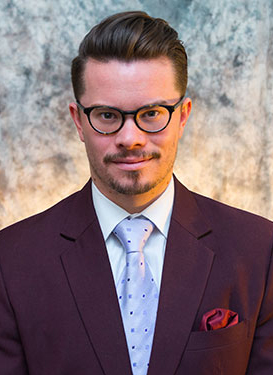Flu rates would drop if Congress mandated paid sick leave
By Susan Kelley

If Congress authorized mandatory paid sick leave, flu rates would decline by at least 5 percent, according to a Cornell economist. His paper is one of the first to offer a glimpse into the rarely studied area of paid sick leave in the United States.
The United States is the only industrialized country in the world without universal access to paid sick leave, and the flu is estimated to cost $87 billion annually, according to the Centers for Disease Control. About half of all workers lack paid sick leave, especially low-income workers in the service sector.
“There’s compelling evidence that a lot of people go to work sick,” said Nicolas Ziebarth, assistant professor of policy analysis and management in the College of Human Ecology. “Paid sick leave is an effective tool to reduce the share of people who go to work when they are ill.”
Those without coverage are more likely to show up at work when they are sick and spread the flu, he said.
“Not only is their work productivity lower, but when they have infectious diseases, like the flu, they spread these diseases, so co-workers and customers get sick,” Ziebarth said. “You have negative spillover effects, and nobody wants that – no employer, no customer, no worker.”
No other research has looked at changes in the U.S. paid sick leave system and gauged its effect on infection rates.
The topic is rarely studied because only a handful of cities and states have mandatory sick leave laws. San Francisco was the first city to require businesses to provide paid sick days to their workers, in 2007. Six major cities followed, including Seattle, Portland, New York City and Philadelphia. On the state level, Connecticut passed a mandatory sick leave law in 2012.
But the movement is gaining momentum, now that California and Massachusetts laws took effect this year and Oregon will come online in January 2016. “Those big states will be game-changers,” Ziebarth said, as other states watch to see what effects the laws have.
The laws generally require employers to provide one hour of paid sick leave for every week an employee works. After eight weeks of work, an employee accrues one day of sick leave. Small businesses are often exempt.
Opponents of paid sick leave typically argue that it dampens job creation and encourages workers to call in sick when they are actually well. But Ziebarth does not believe that is the case; because employees earn only about eight sick days per year, they generally only use sick days when they really need them, he said. “That minimizes cheating on the system,” Ziebarth said.
His paper, “The Pros and Cons of Sick Pay Schemes,” was recently published by the Upjohn Institute for Employment Research. Ziebarth co-wrote the paper with Stefan Pichler, a postdoctoral researcher at ETH Zurich, Switzerland.
In the paper, Ziebarth established a theoretical framework showing how paid sick leave reduces presenteeism. He also demonstrated that a 20 percent reduction in paid sick leave in Germany in the late 1990s resulted in an increase in presenteeism.
Last, he compared flu rates in U.S. cities and states before and after paid sick leave laws were passed. They made the comparison by analyzing data from Google Flu Trends, a now-defunct Google project that analyzed search entries to predict weekly flu rates in major U.S. cities 2003-15. After the laws had passed, the flu rate decreased by a significant 5 percent.
In a related paper, written with a Cornell undergraduate Philip Susser ’16 and under review with the journal Health Services Research, Ziebarth found that those most likely to show up to work sick are low-wage employees making $20 or less per hour. “That is the group that we are most concerned about: unhealthy low-wage workers who have to come to work sick.”
Media Contact
Get Cornell news delivered right to your inbox.
Subscribe